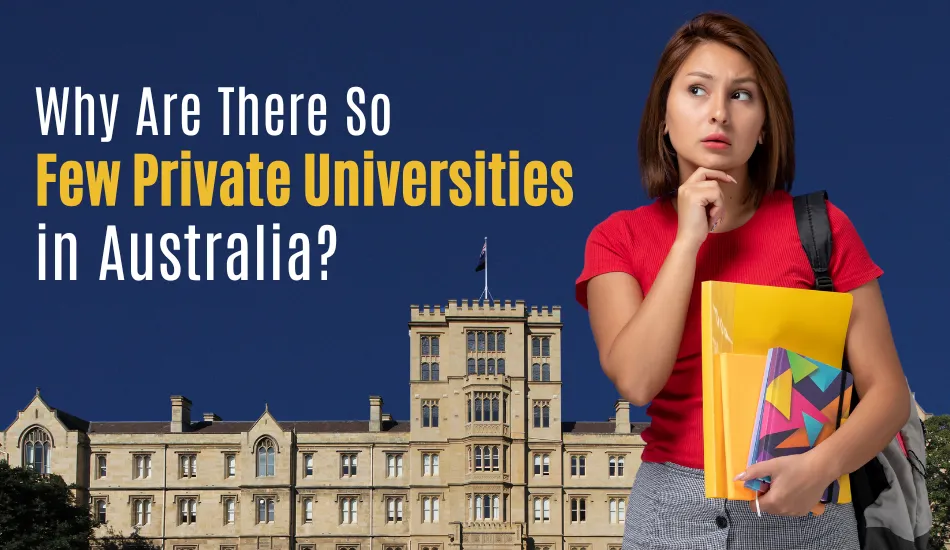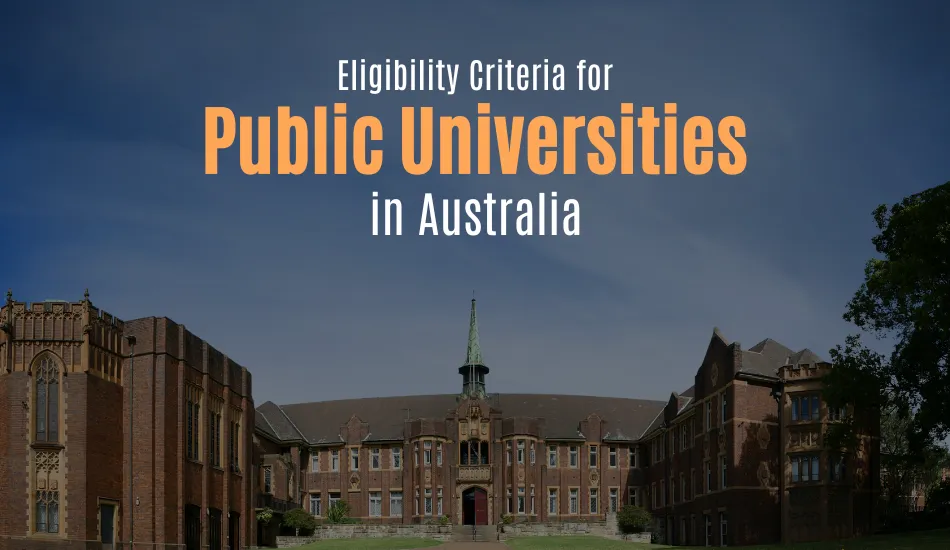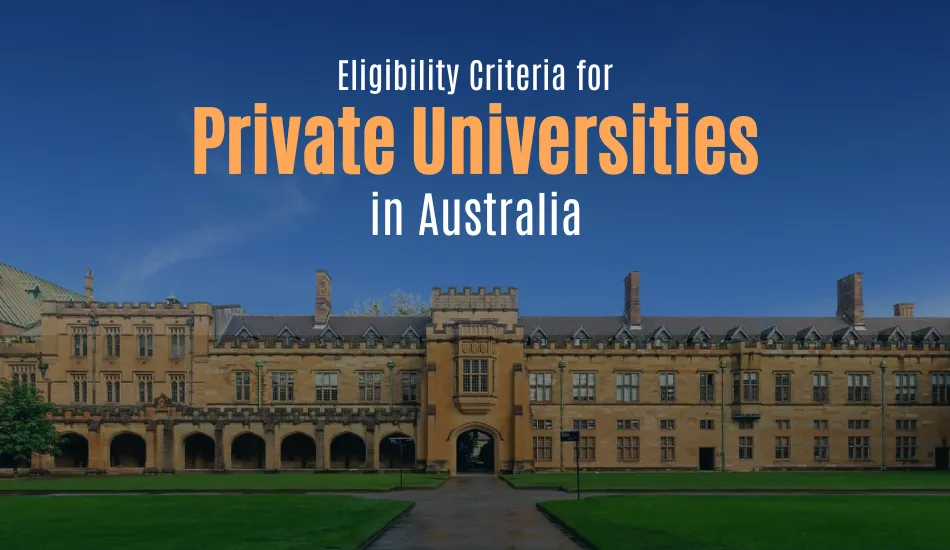Thinking of studying in Australia? Australia is home to globally recognised public and private universities, each offering distinct benefits. Whether you’re drawn by world rankings or specialised programs, knowing the difference between public universities in Australia and private universities in Australia for international students is crucial. This guide helps you decide what suits you best—academically, financially, and in terms of long-term goals. For personalised advice on the application and visa process, consider reaching out to experienced Australian visa consultants like Eduprofound, who can streamline your admission and ensure compliance with current visa regulations.
List of Public Universities in Australia
Public universities in Australia are government-funded institutions known for high academic standards, global rankings, and affordable education. They offer diverse programs and attract international students, for example, through scholarships in Australia for Indian students, part-time work opportunities, and post-study work rights. Whether you’re pursuing research or career-ready degrees, the public university system in Australia offers strong value and global recognition.
| University Name | Location | Known For |
|---|---|---|
| University of Melbourne | Melbourne, VIC | Research, Medicine, Law |
| Monash University | Melbourne, VIC | Engineering, Pharmacy, IT |
| University of Sydney | Sydney, NSW | Law, Arts, Medicine |
| University of Queensland | Brisbane, QLD | Life Sciences, Research |
| University of New South Wales (UNSW) | Sydney, NSW | Engineering, Business, Research |
| Australian National University (ANU) | Canberra, ACT | Politics, Research, Humanities |
| University of Western Australia (UWA) | Perth, WA | Earth Sciences, Marine Biology |
| University of Adelaide | Adelaide, SA | Health Sciences, Engineering |
| University of Technology Sydney (UTS) | Sydney, NSW | Design, Communication, Tech |
| Queensland University of Technology (QUT) | Brisbane, QLD | Media, Business, Tech |
| Deakin University | Melbourne, VIC | Health, Education, Business |
| Griffith University | Brisbane & Gold Coast, QLD | Music, Nursing, Criminology |
| Macquarie University | Sydney, NSW | Linguistics, Business, Finance |
| RMIT University | Melbourne, VIC | Design, Engineering, Architecture |
| La Trobe University | Melbourne, VIC | Science, Humanities, Education |
| James Cook University (JCU) | Townsville & Cairns, QLD | Marine Biology, Tropical Medicine |
| University of Southern Queensland (UniSQ) | QLD | Agriculture, Astronomy |
| Charles Darwin University | Darwin, NT | Remote Education, Indigenous Studies |
| Australian Catholic University (ACU) | Multiple Locations | Health Sciences, Theology |
List of Private Universities in Australia
Private universities in Australia are limited in number but offer flexible admission, small class sizes, and industry-focused programs. Ideal for international students, these institutions provide career-ready courses, quicker admissions, and scholarships—especially in fields like business, design, and hospitality.
| University Name | Location | Known For |
|---|---|---|
| Bond University | Gold Coast, QLD | Law, Business, Personalised Teaching |
| Torrens University Australia | National (Multiple Cities) | Hospitality, Design, MBA |
| University of Divinity | Melbourne, VIC | Theology, Philosophy |
| Avondale University | Cooranbong, NSW | Education, Nursing |
| Christian Heritage College | Brisbane, QLD | Education, Counselling, Theology |
| The University of Notre Dame Australia | Sydney, Fremantle, Broome | Medicine, Nursing, Philosophy |

Why Are There So Few Private Universities in Australia?
Unlike countries such as India or the United States, where private institutions dominate the higher education landscape, Australia’s university system is primarily public and government-regulated. Nearly all top-ranked universities in Australia are public universities, funded and quality-controlled by the government to ensure high academic standards and accessibility.
Only a handful of private universities in Australia exist for international students, and most of them focus on specific fields like business, design, theology, or hospitality. These institutions operate on smaller campuses and are more flexible with admissions, but are less research-intensive compared to their public counterparts.

Eligibility Criteria for Public Universities in Australia
Public universities in Australia follow structured admission guidelines for international students. These institutions, known for academic excellence and research-driven programs, require students to meet minimum academic and language criteria, along with documentation for Australian student visa approval. It’s highly recommended to consult a trusted Australia study visa consultant like Eduprofound, to ensure your application is complete and aligned with the latest immigration policies. Here’s a detailed look at what you need:
Academic Requirements
When applying to public universities in Australia, Indian students typically need:
- A strong academic background in Class 12 or equivalent (minimum 65–85% depending on course and university)
- IB or A-Level results if applying from an international curriculum
- For postgraduate programs: minimum GPA of 60%+ in an undergraduate degree
English Language Proficiency
All international students must meet English language criteria through one of the following:
- IELTS Academic: 6.5 overall (no band less than 6.0)
- TOEFL iBT: 79–90+
- PTE Academic: 58–64+
Entrance Exams
Generally, public universities in Australia do not require GRE, GMAT, or SAT for most programs. However:
- GMAT may be needed for select MBA programs (e.g., UNSW, UQ)
- Medicine and dentistry may require UCAT or GAMSAT
Required Documents
Prepare the following:
- Academic transcripts
- English test scores
- Statement of Purpose (SOP)
- Letters of Recommendation (LORs)
- Resume (for PG courses)
- Passport copy
- Portfolio (for creative courses, if applicable)
Student Visa Compliance
Once you receive your offer letter, you’ll need to:
- Provide a Genuine Temporary Entrant (GTE) statement
- Show financial capacity for 12 months (~AUD 24,505 for living expenses + tuition fee proof)
- Obtain OSHC (Overseas Student Health Cover)
Intake Months
- February (main intake) – most courses available
- July (mid-year intake) – limited courses
- Some universities also offer an November intake for selected programs
Scholarship Opportunities
Many public universities in Australia offer scholarships for international students, including:
- Australia Awards
- Destination Australia Scholarship
- University-specific merit-based scholarships (e.g., Melbourne International Undergraduate Scholarship, UQ International Scholarship)

Eligibility Criteria for Private Universities in Australia
Private universities in Australia for international students have more flexible admission processes while maintaining quality standards. These universities are ideal for students who prefer focused support, quicker timelines, or lower academic stress during application.
Academic Requirements
- Class 12 marks of 50–70% are often accepted, depending on the program
- Undergraduate degrees with a second division or 50%+ for postgraduate courses
- Portfolios are often crucial for design, art, or hospitality-related courses (e.g., Torrens University)
English Language Proficiency
English language requirements are similar to public universities:
- IELTS Academic: 6.0–6.5 overall
- TOEFL iBT: 70–85
- PTE Academic: 50–58
Private universities may also accept internal placement tests or consider the medium of instruction as proof of English.
Rolling Admissions and Flexibility
Unlike public institutions, private universities in Australia often have:
- Multiple intakes throughout the year (Feb, April, July, Sept, Nov)
- Shorter application processing times (2–4 weeks on average)
Higher Tuition, But More Offers
- Tuition fees may be higher (AUD 25,000–60,000/year)
- However, private universities in Australia for international students often give 15%–30% tuition discounts or scholarships to attract talent
Required Documents
- Academic transcripts
- SOP
- LORs (optional in some courses)
- Proof of English proficiency
- Portfolio (if applicable)
- Resume and passport copy
Scholarships & Promotions
Many private institutions like Bond and Torrens offer:
- Entry-level scholarships for international students
- Women in Leadership or industry-specific grants
- Performance-based discounts for high-achieving students
Key Differences Between Public and Private Universities in Australia
Understanding the key differences between public universities in Australia and private universities in Australia for international students is essential when making your study abroad decision. While both types offer quality education, they differ significantly in terms of funding, admissions, class size, tuition fees, and career focus. At EduProfound, we help students make informed choices by breaking down these differences so you can confidently plan your academic journey. Here’s a detailed comparison:
| Feature | Public Universities in Australia | Private Universities in Australia |
|---|---|---|
Ownership & Funding |
Government-funded and regulated | Privately owned and funded through tuition fees |
Global Ranking |
Frequently appear in QS & THE top 200 (e.g., ANU, Melbourne, Sydney) | Rarely featured in global rankings |
Tuition Fees |
More affordable due to public funding (AUD 20,000–45,000/year) | Typically higher (AUD 25,000–60,000/year) |
Scholarships |
Widely available—government and university-based | Offered selectively—entry discounts, performance grants |
Programs Offered |
Wide range: STEM, humanities, business, law, arts, etc. | More focused: business, design, hospitality, theology |
Research Opportunities |
Extensive funding and infrastructure for research | Limited research programs—more career-focused |
Admissions Process |
Competitive with stricter entry criteria | Flexible with quicker admissions and rolling intakes |
Class Size |
Higher student-to-faculty ratio | Smaller classes and personalised attention |
Teaching Style |
Theory plus research-oriented | Industry-aligned, practical, and vocational training |
Work Opportunities |
Strong alumni networks and internship support | Tailored career services and short-term industry placements |
Student Diversity |
High international student population from over 100 countries | Smaller student communities with niche demographics |
Campuses & Facilities |
Large campuses, labs, libraries, and innovation hubs | Modern but smaller campuses, often in city centres |
How to Choose Between Public and Private Universities in Australia?
Choosing between public universities in Australia and private universities in Australia for international students depends on your academic goals, financial plans, learning preferences, and career aspirations. Below are real-life scenarios to help you make an informed decision:
If You’re Aiming for Research and Global Recognition
If you want to pursue a career in research, academics, or international organisations, a public university in Australia like the Australian National University (ANU) or the University of Melbourne is ideal. These institutions are globally ranked, offer extensive research opportunities, and are known for their academic rigour. They also provide a rich learning environment with top-tier faculty and global collaborations.
If You Prefer Smaller Class Sizes and Personalised Learning
For students who thrive in close-knit classroom environments, private universities in Australia, such as Bond University or Torrens University, offer small student-to-faculty ratios and greater personal interaction. These institutions focus on hands-on learning, mentorship, and career-ready programs.
If You’re Budget-Conscious and Need Financial Aid
Many public universities in Australia provide low-cost education for international students compared to their private counterparts. Additionally, they offer a wide variety of scholarships such as the Australia Awards, Destination Australia Scholarships, and merit-based tuition waivers. Choose public universities if you’re seeking affordable tuition fees with top-notch education.
If You Need Flexibility in Intake or Application
Private universities in Australia for international students often have rolling admissions, multiple intakes per year, and faster application decisions. If you’re applying late or missed major deadlines, private institutions might be your best bet.
If You Want a Globally Diverse Environment
Public universities in Australia typically have large international student populations, offering rich cultural exposure and extensive peer networking. However, they often have larger student cohorts, meaning less individual focus. If you want to be part of a large, global campus, public universities are a great match.

Popular Courses Among Indian Students in Australia
Choosing the right course is just as important as selecting between public universities and private universities in Australia for international students. Many Indian students in Australia prioritize career outcomes, permanent residency pathways, and industry demand. Below is a breakdown of the most popular courses pursued by Indian students at both public and private institutions in Australia:
In Public Universities in Australia
Public universities in Australia are known for their academic depth, global rankings, and strong research orientation. Indian students prefer these universities for programs that offer long-term career prospects, global recognition, and PR eligibility.
| Course | Private Universities | Highlights |
|---|---|---|
MBA & Business |
Bond University, Torrens University | Accelerated formats; practical business projects |
UX/UI Design & Creative Tech |
Torrens University (Media Design School, Billy Blue College of Design) | Strong portfolio development; links to creative industries |
Hospitality & Tourism Management |
Blue Mountains International Hotel Management School (via Torrens) | Practical internships, global job demand |
Health & Nutrition |
Torrens University | Industry-ready programs in a growing sector |
Law |
Bond University | Strong faculty-student ratio and courtroom practice |
Frequently Asked Questions (FAQs)
Are public universities in Australia better for getting a job after graduation?
Yes, in most cases. Public universities in Australia have strong employer connections, research facilities, and global rankings, which can boost your job prospects—especially in fields like engineering, IT, healthcare, and science.
Will I get the same post-study work visa from a private university?
Yes—if your course is CRICOS-approved and full-time, you’re eligible for the Temporary Graduate Visa (subclass 485) regardless of whether you study at a public or private university in Australia.
Are private universities easier to get into for Indian students?
Generally, yes. Private universities in Australia for international students often have more flexible entry requirements, such as lower IELTS bands, simpler academic qualifications, and faster processing times.
Do public universities offer more scholarships to Indian students?
Yes. Most public universities in Australia offer merit-based and need-based scholarships for Indian students. These include both government-backed (like Destination Australia) and university-funded schemes.
Is it worth paying more for a private university in Australia?
It depends. If you want smaller class sizes, specialised programs, and quicker admissions, private universities can be valuable. But if you’re looking for research, rankings, and affordability, public universities often offer more value.
Do employers in Australia value public university degrees more?
In many cases, yes—especially for roles in science, government, engineering, and healthcare. Degrees from top public universities in Australia, like the University of Melbourne, ANU, or UNSW, often carry more global recognition.
Are private universities looked down upon in Australia?
Not necessarily. Accredited private universities like Bond or Torrens are respected in their niches (e.g., business, hospitality, creative arts). However, public universities have stronger reputations in research and global rankings.
Can I switch from a private to a public university later?
Yes, it’s possible. Many students start at a private university in Australia and later transfer credits to a public institution. But this depends on course compatibility and academic performance.
Do private universities offer better support for international students?
Often yes. Since private universities have smaller intakes, students report better personal support, mentoring, and career services. Still, major public universities also have strong international student departments.
If I want PR (Permanent Residency), does the university type matter?
No—but your course, occupation, and state nomination matter a lot. Some public universities in regional areas offer pathways with better PR prospects due to regional migration incentives.





